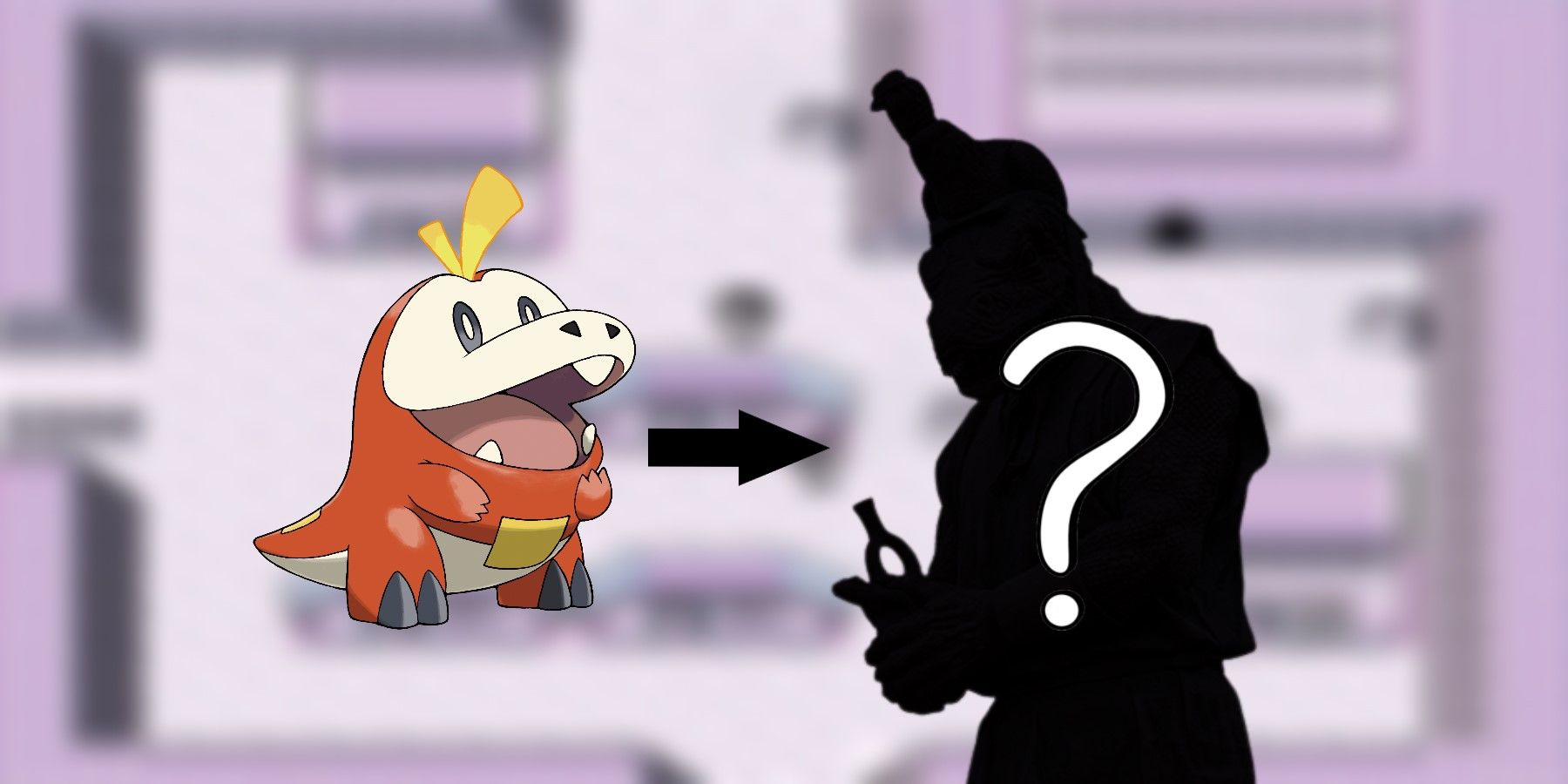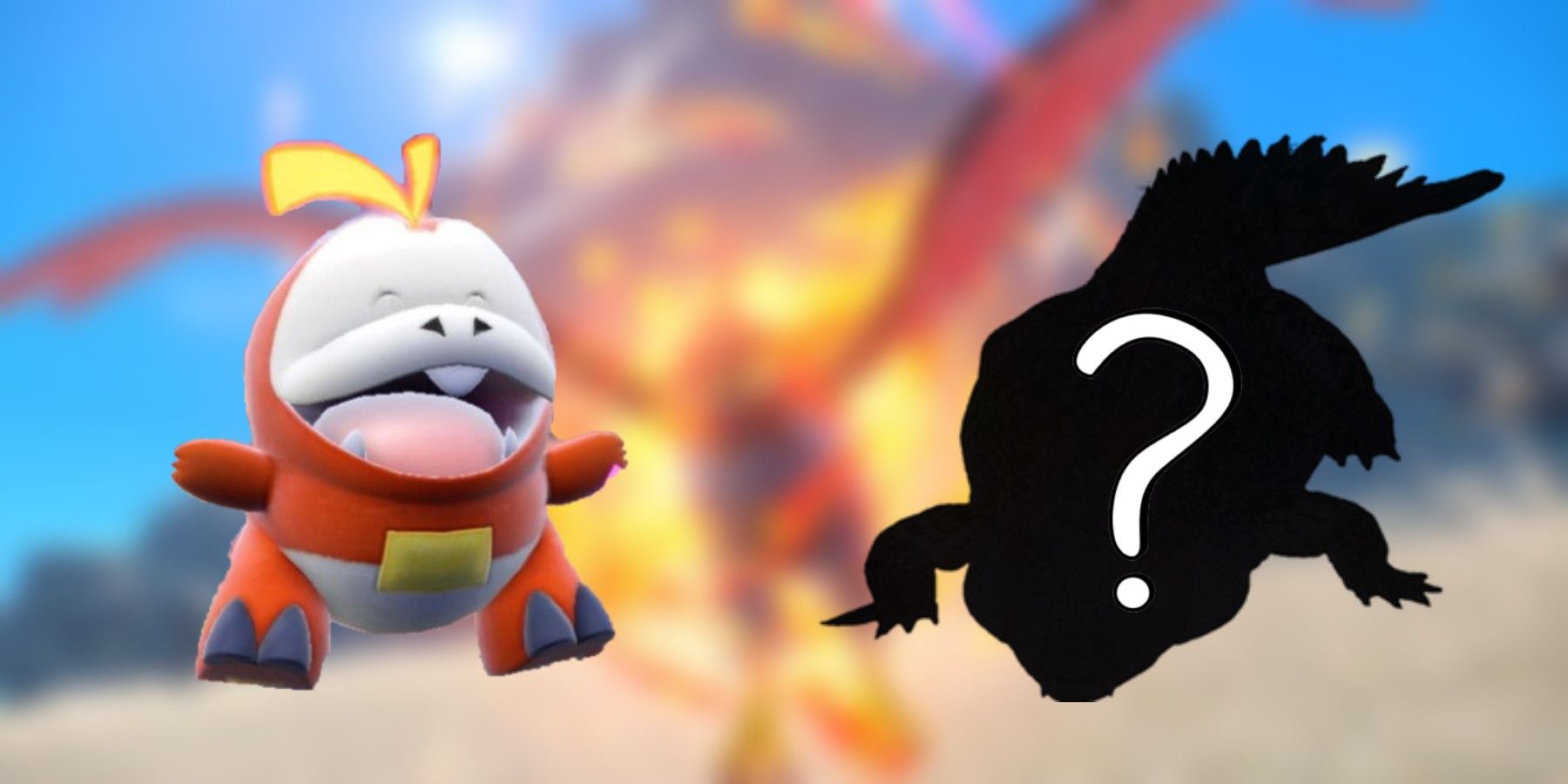Although Pokemon Scarlet and Violet were first revealed all the way back in February, surprisingly very little is officially known about the games, with most of the information online coming actually from alleged leaks. Some leakers have proven to be trustworthy over time, such as Riddler Khu, but most of the information that surfaced over the months was confirmed to be fake, leaving fans with a trail of crumbs at best. Still, there are some precious details about Pokemon Scarlet and Violet that insiders did share, such as the type combination of the three starters for Gen 9 or even their evolutions' design.
One of these rumors surrounds Fuecoco, the fiery crocodile that Pokemon Scarlet and Violet will be able to choose as one of the starters, who is seemingly going to have a flaming egg on its head in its middle stage, and then a flaming bird in its final evolution. This characteristic is quite peculiar, particularly so for one of the starters, but Pokemon Scarlet and Violet's Fuecoco is no stranger to unique evolutionary traits, considering that its final evolution is seemingly going to be quadrupedal. Still, the fact that Fuecoco's evolution is going to be a Fire/Ghost-type hybrid combined with the leaks suggesting that it will have a flaming flying animal on its head, make for an interesting connection to an ancient god.
How a Peruvian God Shares Similarities With Pokemon Scarlet and Violet's Fuecoco
It is no mystery that Pokemon Scarlet and Violet's region draws inspiration from the Iberian Peninsula and Spanish culture in general, possibly including Portugal, making it the first location of Hispanic origin in the mainline series. However, there is a Peruvian god that is not connected to Spain, and this ancient deity might have been one of the sources of inspiration for Fuecoco's evolution. This god, called Morrop, is often described as The Iguana Man because of its appearance, which is not too distant from that of crocodiles and other reptilians.
What's interesting about Morrop is that this divine being was supposedly establishing a link with the human world and the afterlife, according to the beliefs of the people who revered it -- the Mochicas. In fact, Morrop was believed to be the mediator between the living and the dead, and also as an entitiy whose job was to accompany the Mochicas in their descent into the underworld. When it comes to Pokemon Scarlet and Violet's Fuecoco, this trait could very well be associated with the pocket monster's evolution and its rumored typing.
In the Pokemon series, Ghost-type critters naturally have a powerful connection to the world of the dead, and the first example comes from Pokemon Red and Blue's Lavender Town and its eerie Pokemon Tower -- a graveyard for deceased Pokemon. This fact alone would warrant a peculiar link between Fuecoco and Morrop, which is made even more interesting when one factors in the similarities in their physical characteristics. However, perhaps the most compelling analogy between Fuecoco and the Peruvian god comes from the latter being depicted with a chicken on its head.
There is a statue of Morrop in the so-called "Capital of Friendship," a Peruvian town called Chiclayo, and the god is presented in a sort of bargaining pose, with a lizard in its hands and a chicken on the head. If Fuecoco's evolution in Pokemon Scarlet and Violet truly ends up having a flaming bird on its head, the affinities between the pocket monster and the Peruvian god would be a bit too powerful for them to be coincidences. Regardless, it's intriguing to think that even though Iberian culture is at the center of Pokemon Scarlet and Violet, other Hispanic countries ended up playing a role in the creative process for Gen 9.
Pokemon Scarlet and Violet release for Nintendo Switch on November 18, 2022.


